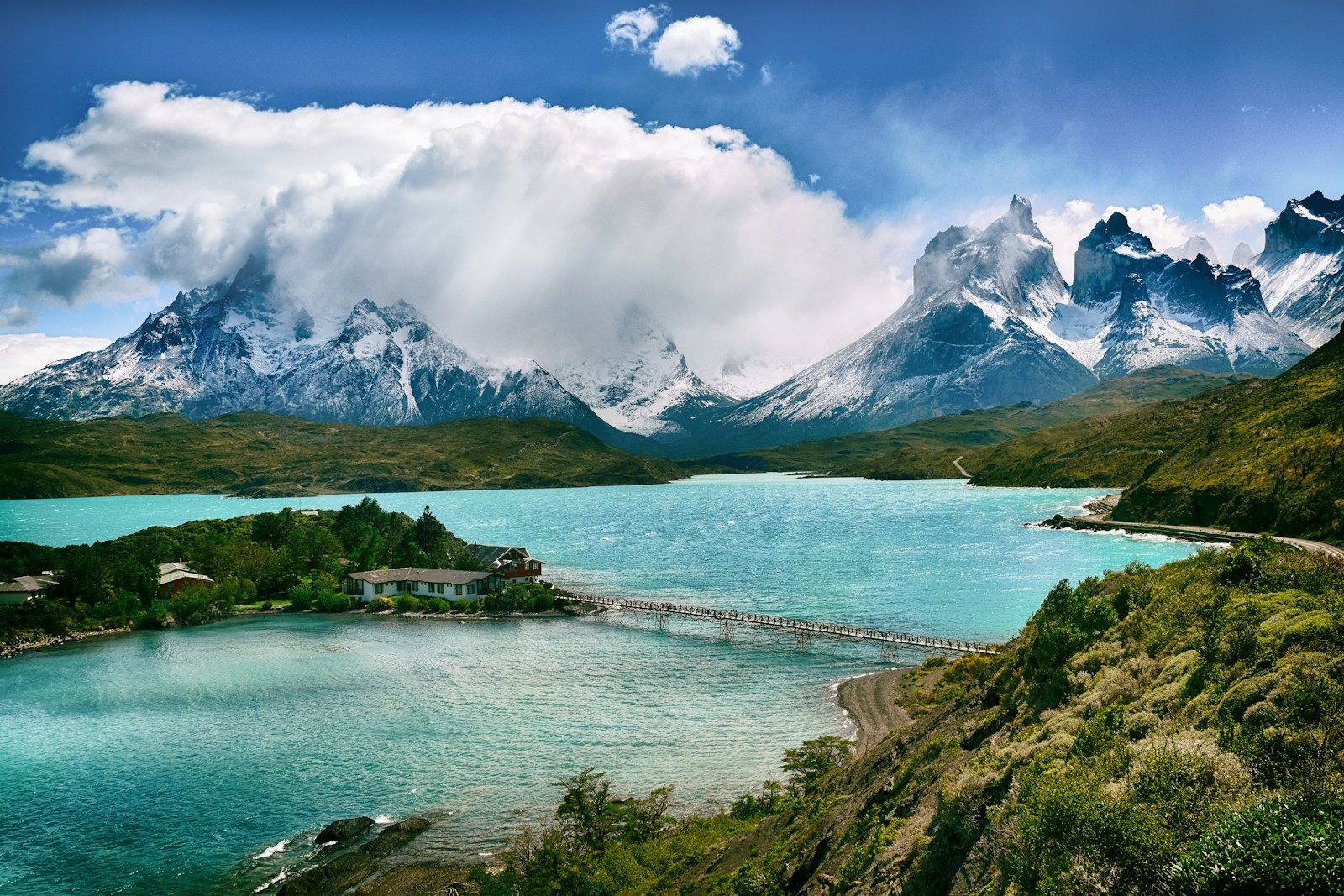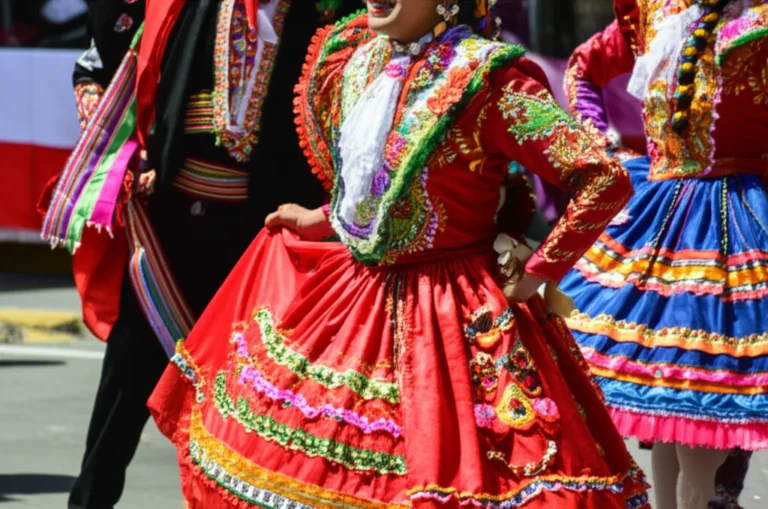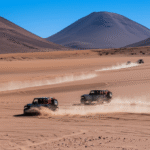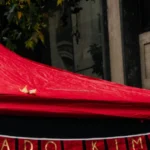Support our educational content for free when you purchase through links on our site. Learn more
10 Must-See Festivals in Chile Worth Planning Your 2025 Trip Around 🎉
Picture this: you’re dancing under the vibrant skies of Arica’s International Andean Carnival, the air thick with the scent of roasted lamb and freshly poured wine, surrounded by locals clad in dazzling traditional costumes. Sounds like a dream, right? Well, this is just a glimpse of what Chile’s festival scene has to offer—and trust us, it’s worth timing your trip around these unforgettable celebrations.
From the fiery passion of Santiago’s Fiestas Patrias in September to the frothy cheers at Valdivia’s Bierfest in January, Chile’s festivals are a feast for the senses and a deep dive into the country’s rich culture, history, and flavors. Whether you’re a foodie, music lover, or culture seeker, this guide uncovers 10 incredible events across Chile that will make your 2025 visit truly spectacular. Ready to discover when and where to go? Let’s jump in!
Key Takeaways
- Chile’s festival calendar is packed from February through November, with highlights like the International Andean Carnival, Vendimia de Curicó, and Fiestas Patrias.
- Each festival offers a unique cultural experience blending indigenous traditions, colonial history, and modern celebrations.
- Plan ahead: book accommodations early and pack for diverse climates—from desert heat to Patagonian chill.
- Top festivals include culinary feasts, music extravaganzas, and traditional dances that showcase Chile’s vibrant identity.
- Responsible tourism matters: support local artisans, respect customs, and minimize your environmental impact.
Ready to gear up for your Chilean adventure?
- 👉 Shop Travel Essentials: Packing Cubes | Reusable Water Bottles
- Explore Chile Travel Guides: Lonely Planet Chile | Fodor’s Chile
Table of Contents
- ⚡️ Quick Tips and Facts About Chile’s Must-See Festivals
- 🌎 Chile’s Vibrant Festival Culture: A Colorful Journey Through Time
- 1. From Santiago to Patagonia: Your Ultimate Roadmap to Chile’s Best Culinary Festivals
- 2. Experience the Magic of the International Andean Carnival in Arica
- 3. Sip and Savor: Wine Lovers’ Dream at Vendimia de Curicó
- 4. Raise a Glass at Valdivia’s Legendary Bierfest Craft Beer Festival
- 5. Feast Your Senses at Ñam Festival: Santiago’s Culinary Extravaganza
- 6. Celebrate Chilean Pride: Santiago’s Fiestas Patrias Like a Local
- 7. Surf, Sun, and Seafood: The Fiesta de Comidas Costeras in Pichilemu
- 8. Discover Patagonia’s Flavors at Sabores Natalinos in Puerto Natales
- 9. Dive Into Chile’s Music Scene: Top Music Festivals Worth Timing Your Trip For
- 10. Traditional and Indigenous Festivals: Embracing Chile’s Rich Cultural Heritage
- How to Plan Your Trip Around Chile’s Festivals: Insider Tips and Tricks
- What to Expect: Weather, Crowds, and Local Vibes During Festival Season
- Responsible Tourism: How to Enjoy Chile’s Festivals Sustainably
- Conclusion: Why Chile’s Festivals Are the Ultimate Reason to Book Your Trip Now
- Recommended Links for Festival Dates and Travel Planning
- FAQ: Your Burning Questions About Chile’s Festivals Answered
- Reference Links and Resources for Festival Enthusiasts
⚡️ Quick Tips and Facts About Chile’s Must-See Festivals
Planning a trip to Chile? You’re in for a treat! Chile’s festivals are like a vibrant tapestry woven with culture, music, food, and tradition. Before we dive into the juicy details, here are some quick tips and facts from the Chile Vacay™ team to get you started:
- ✅ Best time to visit for festivals: February through November, with a peak in September for Fiestas Patrias. For a full seasonal breakdown, check our detailed guide on best times to visit Chile.
- ✅ Book accommodations early! Especially for big events like the International Andean Carnival or Fiestas Patrias.
- ✅ Local cuisine is a festival highlight. Don’t miss empanadas, mote con huesillo, and Patagonian lamb.
- ✅ Transportation: Chile’s long geography means planning your route is key — domestic flights and buses are your friends.
- ✅ Language: Spanish is dominant, but festival staff often speak some English in tourist hotspots.
- ✅ Pack for all climates: From the Atacama desert to Patagonia’s chill, layers are your best friend.
- ✅ Respect local customs: Many festivals have indigenous roots; embrace the culture with an open heart.
Ready to explore Chile’s festival calendar like a pro? Let’s jump in! 🎉
🌎 Chile’s Vibrant Festival Culture: A Colorful Journey Through Time
Chile’s festivals are more than just parties — they’re living stories of the country’s indigenous heritage, colonial history, and modern identity. From the high deserts of the north to the windswept fjords of Patagonia, each region brings its own flavor to the celebration.
- Indigenous roots: Festivals like the International Andean Carnival and the Festival of La Tirana blend ancient Aymara, Mapuche, and Rapa Nui traditions with Catholic rituals.
- Colonial and national pride: Fiestas Patrias is the biggest national celebration, marking Chile’s independence with patriotic fervor.
- Culinary celebrations: Food festivals like Ñam and Vendimia de Curicó showcase Chile’s rich agricultural bounty and evolving gastronomy.
- Music and dance: Events like Viña del Mar Song Festival and the Tapati Rapa Nui bring international and local artists together for unforgettable performances.
This cultural mosaic means there’s a festival for every traveler’s taste — whether you crave traditional dances, gourmet food, or wild street parties.
1. From Santiago to Patagonia: Your Ultimate Roadmap to Chile’s Best Culinary Festivals
Chile’s culinary festivals are a foodie’s dream come true. Here’s a quick roadmap to the top events that will have your taste buds dancing:
| Festival | Location | When | Highlights | Insider Tip |
|---|---|---|---|---|
| Vendimia de Curicó | Curicó | March–April | Wine harvest, artisan crafts, folklore music | Visit Radal Siete Tazas National Park nearby |
| Ñam Festival | Santiago | March | 100+ food stands, workshops, family activities | Try Boragó or Central Market for local eats |
| Fiesta de Comidas Costeras | Pichilemu | November | Seafood, cochayuyo dishes, live music | Stay at May y Vino Hotel for Mareal restaurant |
| Sabores Natalinos | Puerto Natales | November | Patagonian lamb, local delicacies | Check out Singular Patagonia restaurant |
Pro tip: Many festivals include artisan markets and live music, so bring your appetite and dancing shoes! For more culinary adventures, explore our Destinations section.
2. Experience the Magic of the International Andean Carnival in Arica
If you want to witness one of Latin America’s largest and most colorful carnivals, the International Andean Carnival in Arica is your go-to event. Held annually in mid-February (Feb 14–16, 2025), this festival is a spectacle of vibrant costumes, traditional dances, and mouthwatering cuisine from Chile, Peru, Bolivia, and Afro-descendant communities.
What to Expect:
- Parades with dancers in dazzling costumes representing Andean deities and folklore.
- A gastronomic fair featuring regional specialties like picarones (sweet fried doughnuts) and anticuchos (grilled meat skewers).
- Live music blending Andean pan flutes with modern beats.
- Family-friendly workshops and artisan stalls.
Our experience: We booked a cozy guesthouse weeks in advance and were rewarded with front-row seats to the parade. The energy was infectious — locals and tourists alike danced in the streets until dawn!
Booking tip: Hotels fill fast — check platforms like Booking.com early.
3. Sip and Savor: Wine Lovers’ Dream at Vendimia de Curicó
Chile’s oldest and most celebrated wine harvest festival, Vendimia de Curicó, takes place between March and April. It’s a bubbly blend of wine tastings, artisan crafts, folklore performances, and culinary delights.
Highlights:
- Blessing of the first grape must — a centuries-old tradition.
- A gastronomic boulevard featuring local cheeses, olives, and fresh produce.
- Live music and folkloric dance performances.
- Artisan markets selling pottery, textiles, and jewelry.
Why we love it: Curicó’s laid-back vibe lets you savor every sip and bite without the hustle of bigger cities. Plus, nearby natural wonders like Radal Siete Tazas National Park make it a perfect day trip.
Pro tip: Join a guided wine tour with companies like Wine Roads Chile for insider access to boutique vineyards.
4. Raise a Glass at Valdivia’s Legendary Bierfest Craft Beer Festival
Calling all craft beer lovers! Valdivia’s Bierfest, held in late January, is a four-day celebration organized by the famous Kunstmann Brewery. It’s a frothy mix of beer tastings, live music, vintage car shows, and traditional German fare.
What’s on tap:
- Over 50 varieties of craft beer, including Kunstmann’s signature brews.
- A lively beer parade with locals in traditional Bavarian dress.
- Food stalls serving bratwurst, sauerkraut, and pretzels.
- Family-friendly activities and artisan markets.
Our take: We loved the festive atmosphere and the chance to sample rare brews. Valdivia’s charming riverside setting adds to the experience.
Beer tours: Kunstmann offers brewery tours year-round — a must for enthusiasts.
5. Feast Your Senses at Ñam Festival: Santiago’s Culinary Extravaganza
Every March, Santiago hosts the Ñam Festival, a celebration of “social gastronomy” that brings together chefs, foodies, and families for a weekend of indulgence.
Festival features:
- The Ñam Mercado with over 100 food stands showcasing Chilean and international cuisine.
- Ñamcito, a kids’ zone with workshops and performances.
- Cooking demonstrations by top chefs like Rodolfo Guzmán of Boragó.
- Food trucks, artisanal products, and live music.
Why it’s special: Ñam is more than a food fair — it’s a community gathering that highlights Chile’s culinary innovation and tradition.
Our favorite: Sampling pastel de choclo and fresh seafood ceviche while chatting with local chefs.
6. Celebrate Chilean Pride: Santiago’s Fiestas Patrias Like a Local
Nothing beats the energy of Fiestas Patrias, Chile’s national independence celebration held on September 18–19. Santiago’s Parque O’Higgins transforms into a giant open-air party with:
- Traditional food stands serving empanadas de pino, choripán, and anticuchos.
- Drinks like mote con huesillo, chicha, and the infamous terremoto cocktail.
- Live folk music and cueca dancing competitions.
- Games, rodeos, and artisan markets.
Our insider tip: Dress in traditional attire if you can — locals love sharing their culture with enthusiastic visitors.
Crowd alert: It’s busy but worth it. Arrive early to snag good spots and enjoy the festive atmosphere.
7. Surf, Sun, and Seafood: The Fiesta de Comidas Costeras in Pichilemu
If you’re craving fresh seafood and beach vibes, plan your trip to Pichilemu in November for the Fiesta de Comidas Costeras. This festival celebrates coastal cuisine with a spotlight on the seaweed superfood cochayuyo.
Highlights:
- Food stalls featuring dishes like ceviche, seaweed salads, and grilled fish.
- Artisan crafts and regional wines.
- Live music and a culinary competition.
- Nearby surf breaks, perfect for catching waves.
Our story: After a morning surf session, we indulged in local flavors at the festival — the perfect combo of adrenaline and gastronomy.
Stay tip: The May y Vino Hotel’s Mareal restaurant is a local favorite for fresh seafood.
8. Discover Patagonia’s Flavors at Sabores Natalinos in Puerto Natales
For a taste of wild Patagonia, Sabores Natalinos in Puerto Natales (November) is a must. This festival highlights cordero al palo (spit-roasted lamb) and other regional delicacies.
Festival features:
- Open-air grills roasting lamb over wood fires.
- Artisan markets with wool products and handmade crafts.
- Live music and storytelling sessions.
- Opportunities to meet local chefs and producers.
Why we recommend it: The rugged beauty of Patagonia combined with hearty food makes for an unforgettable experience.
Don’t miss: Dining at Singular Patagonia or grabbing baked goods from Patagonia Black Lamb bakery.
9. Dive Into Chile’s Music Scene: Top Music Festivals Worth Timing Your Trip For
Chile’s music festivals are a sonic feast for every genre lover:
- Viña del Mar International Song Festival (late February): The continent’s biggest music event, featuring international stars and local legends at Quinta Vergara.
- Festival of La Tirana (July): A week-long religious and cultural celebration with traditional Andean music and dance.
- Tapati Rapa Nui (February): On Easter Island, a vibrant festival with indigenous music and dance competitions.
- Lollapalooza Chile (March): A global rock and pop festival held in Santiago.
Our experience: We caught Viña del Mar’s electrifying performances and were blown away by the crowd’s energy.
10. Traditional and Indigenous Festivals: Embracing Chile’s Rich Cultural Heritage
Chile’s indigenous communities keep their traditions alive through festivals that are both spiritual and spectacular:
- New Year for Indigenous Cultures (June 21–24): Celebrated by Aymara, Mapuche, and others with ancestral ceremonies.
- Festival of La Tirana (July): Combines Catholic and indigenous rituals with colorful dances.
- Tapati Rapa Nui (February): A showcase of Rapa Nui culture with body painting, storytelling, and competitions.
Why attend: These festivals offer a deep dive into Chile’s soul and are a chance to connect with living history.
How to Plan Your Trip Around Chile’s Festivals: Insider Tips and Tricks
Planning is key to making the most of Chile’s festival scene. Here’s how to ace it:
- Book early: Popular festivals fill hotels fast. Use platforms like Booking.com or Airbnb.
- Check festival dates: They can shift yearly. Official tourism sites like Chile.travel are reliable.
- Pack smart: Bring layers, sun protection, and comfortable shoes.
- Local transport: Use buses or rent a car for rural festivals; domestic flights save time for distant regions.
- Stay hydrated and pace yourself: Festivals can be long and lively.
- Learn basic Spanish phrases: It enhances your experience and connects you with locals.
What to Expect: Weather, Crowds, and Local Vibes During Festival Season
Chile’s diverse geography means festival experiences vary:
| Region | Festival Season | Weather | Crowd Level | Vibe |
|---|---|---|---|---|
| Arica (North) | February | Hot, dry | High | Energetic, colorful |
| Santiago | March, September | Mild spring/fall | Very High | Urban, festive, bustling |
| Valdivia | January | Warm, rainy | Moderate | Laid-back, beer-loving |
| Patagonia | November | Cool, windy | Low-Moderate | Rustic, intimate |
Our advice: Check local forecasts and festival websites to prepare for sudden weather changes.
Responsible Tourism: How to Enjoy Chile’s Festivals Sustainably
We love Chile’s festivals, and we want them to thrive! Here’s how you can be a responsible traveler:
- Respect local customs and traditions.
- Support local artisans and vendors by buying authentic crafts.
- Avoid single-use plastics: Bring a reusable water bottle.
- Use public transport or carpool to reduce your carbon footprint.
- Dispose of waste properly and leave festival sites clean.
- Engage respectfully with indigenous communities and ask before photographing ceremonies.
By traveling thoughtfully, you help preserve these vibrant traditions for generations to come.
Conclusion: Why Chile’s Festivals Are the Ultimate Reason to Book Your Trip Now
After exploring Chile’s dazzling array of festivals—from the fiery dances of the International Andean Carnival in Arica to the mouthwatering feasts at Vendimia de Curicó and the spirited Fiestas Patrias in Santiago—it’s clear that Chile’s festivals are not just events, but immersive cultural experiences that bring the country’s soul to life. Whether you’re a foodie, a music lover, an adventure seeker, or a culture enthusiast, there’s a festival here that will make your trip unforgettable.
What makes Chile’s festivals truly special? It’s the perfect blend of tradition and modernity, the warmth of the people, and the stunning backdrops—from deserts to glaciers—that set the stage for these celebrations. Plus, the insider tips we shared will help you navigate the crowds, weather, and logistics like a pro.
If you’ve been wondering whether to time your trip around these events, we say: absolutely yes! The energy, the flavors, and the stories you’ll gather are worth every effort. Just remember to plan ahead, pack smart, and keep an open heart to fully embrace the magic.
So, what are you waiting for? Your Chilean festival adventure awaits! 🎉🍷🌄
Recommended Links for Festival Dates and Travel Planning
Ready to gear up for your Chilean festival journey? Here are some handy shopping and resource links to help you prepare:
- Wine Roads Chile Tours: Official Website
- Kunstmann Brewery Tours: Kunstmann Official Site
- Booking.com – Chile Hotels: Search Chile Hotels
- Amazon – Chile Travel Guides:
- Lonely Planet Chile & Easter Island Amazon Link
- Fodor’s Essential Chile Amazon Link
- Amazon – Travel Essentials:
- Packing Cubes for Efficient Travel Amazon Link
- Reusable Water Bottles Amazon Link
FAQ: Your Burning Questions About Chile’s Festivals Answered
What are the most popular festivals and celebrations in Chile that showcase its vibrant culture and traditions?
The Fiestas Patrias in September is Chile’s biggest national celebration, featuring traditional food, music, and dance. Other major events include the International Andean Carnival in Arica, the Vendimia de Curicó wine harvest festival, and the Bierfest in Valdivia. These festivals highlight Chile’s rich indigenous heritage, colonial history, and modern cultural fusion, offering visitors a full sensory experience of the country’s identity.
Are there any unique or off-the-beaten-path events in Chile that are not as well-known to tourists but still worth attending?
Absolutely! Festivals like Sabores Natalinos in Puerto Natales showcase Patagonian cuisine and culture in an intimate setting. The Fiesta de Comidas Costeras in Pichilemu celebrates coastal seafood traditions with a focus on the superfood cochayuyo. Additionally, indigenous celebrations such as the New Year for Indigenous Cultures in June and the Festival of La Tirana in July offer profound cultural insights away from the typical tourist trail.
How do I plan a trip to Chile around the country’s famous wine harvest festival, and what activities can I expect to enjoy during this time?
The Vendimia de Curicó takes place between March and April. To plan your trip, book accommodations early and consider joining guided wine tours like those offered by Wine Roads Chile. Expect grape harvest ceremonies, tastings of local varietals, artisan markets, folkloric music, and culinary delights. Nearby natural attractions like Radal Siete Tazas National Park make excellent day trips to complement your festival experience.
What are the best ways to experience the Fiestas de la Virgen de Carmen in Chile, a traditional festival that takes place in July, and what are the highlights of this event?
The Fiestas de la Virgen de Carmen is a deeply religious celebration honoring Chile’s patron saint. It features processions, traditional dances, and community gatherings, especially in rural areas and towns like La Tirana. To experience it authentically, participate in local ceremonies, respect the spiritual atmosphere, and engage with indigenous communities who keep these traditions alive. The highlight is the vibrant dance performances and the strong sense of communal faith.
How can I enjoy Chile’s music festivals while avoiding the crowds and getting the best experience?
For major music festivals like Viña del Mar and Lollapalooza Chile, buy tickets well in advance and consider attending weekday events when crowds are lighter. Arrive early to secure good spots and explore nearby cultural attractions to balance the festival frenzy. Smaller festivals like Tapati Rapa Nui offer more intimate settings with rich cultural immersion.
What should I pack for attending Chile’s festivals considering the country’s diverse climate?
Chile’s geography ranges from desert to glacier, so pack layers! Include sun protection for northern festivals like Arica’s carnival, rain gear for southern events like Valdivia’s Bierfest, and warm clothing for Patagonia’s Sabores Natalinos. Comfortable walking shoes and reusable water bottles are festival essentials.
Reference Links and Resources for Festival Enthusiasts
- Chile.travel – Official Events Calendar
- Kunstmann Brewery – Bierfest Info
- Wine Roads Chile – Curicó Wine Tours
- Booking.com – Chile Hotels
- Lonely Planet – Chile Travel Guide
- Exoticca – Chile Festivals Overview
- Afar – Chilean Food Festivals
Ready to dive into Chile’s festival magic? Start planning your unforgettable adventure now! 🎉🍷🌎



